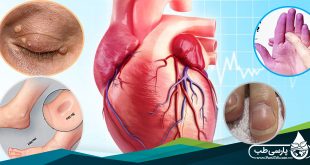Coronary angioplasty
This factsheet is for people who are considering having a coronary angioplasty, or who would like information about it.
Coronary angioplasty involves flattening the fatty material that can build up inside the walls of the main blood vessels (arteries) to the heart, causing them to narrow.
Your care will be adapted to meet your individual needs and may differ from what is described here. So it’s important that you follow your doctor’s advice.
About coronary angioplasty
The heart is supplied with oxygen by blood arriving in the coronary arteries. If fatty material (atheroma) builds up in the coronary arteries, it causes them to narrow. This starves the heart of oxygen, which causes pain in the chest called angina. If the arteries are almost completely blocked, it makes a heart attack more likely.
Coronary angioplasty can open up the narrowed arteries so that blood flows more easily to the heart muscle.
Coronary angioplasty is also known as angioplasty for short, and we will refer to the procedure as angioplasty throughout this factsheet. Other names for the procedure are percutaneous transluminal coronary angioplasty (PTCA) and percutaneous coronary intervention (PCI).
A blood vessel with arthrosclerosis treated with balloon angioplasty
Preparing for your procedure
Your doctor will explain how to prepare for your procedure. For example, if you smoke you will be asked to quit, as smoking increases your risk of getting a wound infection and slows your recovery.
An angioplasty usually requires one night in hospital. The procedure is usually done under local anaesthesia. This completely blocks feeling from the entry area and you stay awake during the procedure. You may be offered a sedative with a local anaesthetic to help you relax.
Before angioplasty, you will be asked not to eat or drink anything for about four hours, although you may be allowed some water.
At the hospital your nurse will explain how you will be cared for during your stay. Your nurse may check your heart rate and blood pressure, and test your urine. A nurse will clean (and may shave) your groin, arm or wrist where a catheter (a thin flexible tube) will be inserted during the procedure.
You may have tests prior to angioplasty including:
blood tests
an electrocardiogram (ECG) which is a test that measures the electrical activity of your heart to see how well it’s working
an angiogram
An angiogram is a dye test to find where the narrowings are in the coronary arteries. A special dye that shows up on X-ray pictures is injected into the coronary arteries and this allows detailed images of your arteries and veins to be produced.
On the basis of these tests, the doctor decides whether angioplasty is the most appropriate treatment. In some cases the angiogram progresses straight to angioplasty in the same procedure.
You may be asked to wear compression stockings to help prevent blood clots forming in the veins in your legs. You may need to have an injection of an anti-clotting medicine called heparin as well as, or instead of, stockings.
Your doctor will usually visit you to discuss the procedure and ask you to sign a consent form. This confirms that you understand the risks, benefits and possible alternatives to the procedure and have given your permission for it to go ahead.
About the procedure
You will probably have your angioplasty in a specially equipped room called a catheterisation laboratory. The procedure lasts around 30 minutes, but may take longer depending on how many arteries need to be treated.
Your doctor will make a small cut in your groin, arm or wrist and thread a catheter through an artery that leads to your heart. He or she will inject a special dye into your blood vessels and using X-ray pictures, will direct the catheter to the narrowed section of the artery. You won’t feel the catheter inside the blood vessels but you may feel a warm sensation when the dye moves around your body.
Your doctor will pass a thin, flexible guide wire, with a tiny, deflated balloon at the end, down the catheter. When it reaches the fatty deposit, the balloon will be gently inflated to squash the fatty material. The balloon will then be deflated and removed, leaving more room in the artery for blood to flow to your heart.
A stent is often used to hold the artery open after the balloon has been removed. The collapsed stent covers the balloon and is opened when the balloon is inflated. The stent may be a bare metal stent (also known as an uncoated stent) or a drug-eluting stent. Drug-eluting stents are coated with a medicine that reduces the risk of the artery becoming narrow again after the angioplasty.
Your doctor will advise whether a stent is suitable for your angioplasty and if so, which type of stent is best for you.
The tube used to insert the catheter into your artery may be left in your groin or arm for a few hours. When it’s removed a nurse will press firmly for up to 20 minutes to seal the artery. This helps to reduce bleeding when it’s taken out.
What to expect afterwards
An angioplasty usually requires one night in hospital but if your angioplasty is done as a day case, you may be able to go home later that day.
You will need to arrange for someone to drive you home. You should try to have a friend or relative stay with you for the first 24 hours.
Your nurse will give you some advice before you go home. This includes information about:
medicines, such as those that help to stop blood clots forming around the stent after your operation
advice about how you can improve your diet and lifestyle once you get home
You may be given a date for a follow-up appointment.
Recovering from angioplasty
If you need them, you can take over-the-counter painkillers such as paracetamol or ibuprofen. Always read the patient information that comes with your medicine and if you have any questions, ask your pharmacist for advice.
Although you may feel well, you should take it easy for the first week after your operation.
You shouldn’t drive for at least a week after angioplasty or at least six weeks if you drive a large vehicle such as a minibus or truck.
If you have questions about what you can and can’t do, ask your doctor or nurse for guidance.
What are the risks?
Angioplasty is commonly performed and generally safe. However, in order to make an informed decision and give your consent, you need to be aware of the possible side-effects and the risk of complications of this procedure.
Side-effects of angioplasty
These are the unwanted, but mostly temporary effects of a successful treatment.
You may have chest pain while the balloon is being inflated in your artery and some pain or bruising where the catheter was inserted.
If you have any redness, swelling or widespread bruising you should contact your GP.
Complications of angioplasty
This is when problems occur during or after the operation. Most people are not affected. The possible complications of any operation include an unexpected reaction to the anaesthetic, excessive bleeding or developing a blood clot, usually in a vein in the leg (deep vein thrombosis, DVT).
Specific complications of angioplasty are rare but can include the following.
The treated arteries gradually re-narrowing. If this happens the angioplasty may need to be repeated. Stents may help to slow down the narrowing.
Some people can have an allergic reaction to the dye used in the angiogram.
The coronary artery may become completely blocked during or soon after the procedure. The angioplasty may need to be repeated straight away or emergency coronary artery bypass graft surgery may be needed to bypass the affected veins.
The tip of the catheter can dislodge a clot of blood or fatty plaque from the wall of a blood vessel. It’s possible for these to block an artery leading to the heart or brain, causing a heart attack or stroke.
There is a risk of death but this is very rare.
The exact risks are specific to you and will differ for every person, so we have not included statistics here. Ask your doctor to explain how these risks apply to you.
 Parsi Teb Physical and Mental Health Journal
Parsi Teb Physical and Mental Health Journal 



